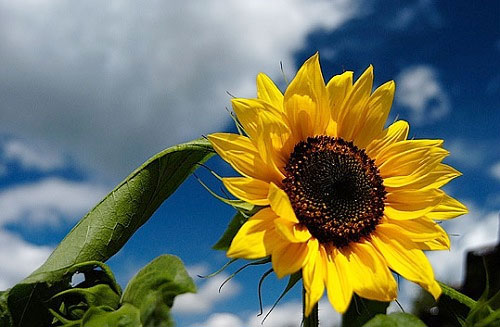Japan uses sunflower plants to decontaminate soil
Japan is recruiting volunteers to plant sunflowers in Fukushima Prefecture and turn this flower into a symbol of the revival after the nuclear incident.
This is a plan implemented by scientists from the Japan Aerospace Research and Development Agency (JAXA) to extract radioactive substances in contaminated soil from Fukushima nuclear power plant No. 1.

Sun Flower.
In the Chernobyl nuclear accident in Ukraine in 1986, sunflowers were also used to decontaminate contaminated soil.
According to scientists, radioactive isotope cesium is a calium-like substance in fertilizer.In the absence of potassium fertilizers, sunflowers will absorb cesium instead.
Japanese scientists have also planned to treat sunflowers that need to be destroyed by using adaptive aerobic bacteria at high temperatures. This bacterium will help reduce up to 99% of the amount of flowers that need to be destroyed, thus minimizing the amount of radioactive material released when the flowers are burned.
Currently, Japanese scientists have prepared 300kg of sunflower seeds and received a cooperation commitment from Thailand, which grows many kinds of flowers.
- Sunflower does not reduce radioactivity in soil
- Japan will bury contaminated soil in some forests
- Harm of sunflower seeds
- Sunflower plants bloom 104 flowers
- How to choose sunflower seeds safely
- Techniques for growing and caring chrysanthemum plants
- Japan spent 970 million USD to build a place to store contaminated soil
- What is the land? How soil formed?
- Irradiation techniques in the production of biological protein preparations
- British scientists try to revive the pasture land
- Sunflower pollen protects bees
- Da Nang cooperates with Japan to renovate dioxin contaminated soil
 Is the magnetic North Pole shift dangerous to humanity?
Is the magnetic North Pole shift dangerous to humanity? Washington legalizes the recycling of human bodies into fertilizer
Washington legalizes the recycling of human bodies into fertilizer Lightning stone - the mysterious guest
Lightning stone - the mysterious guest Stunned by the mysterious sunset, strange appearance
Stunned by the mysterious sunset, strange appearance